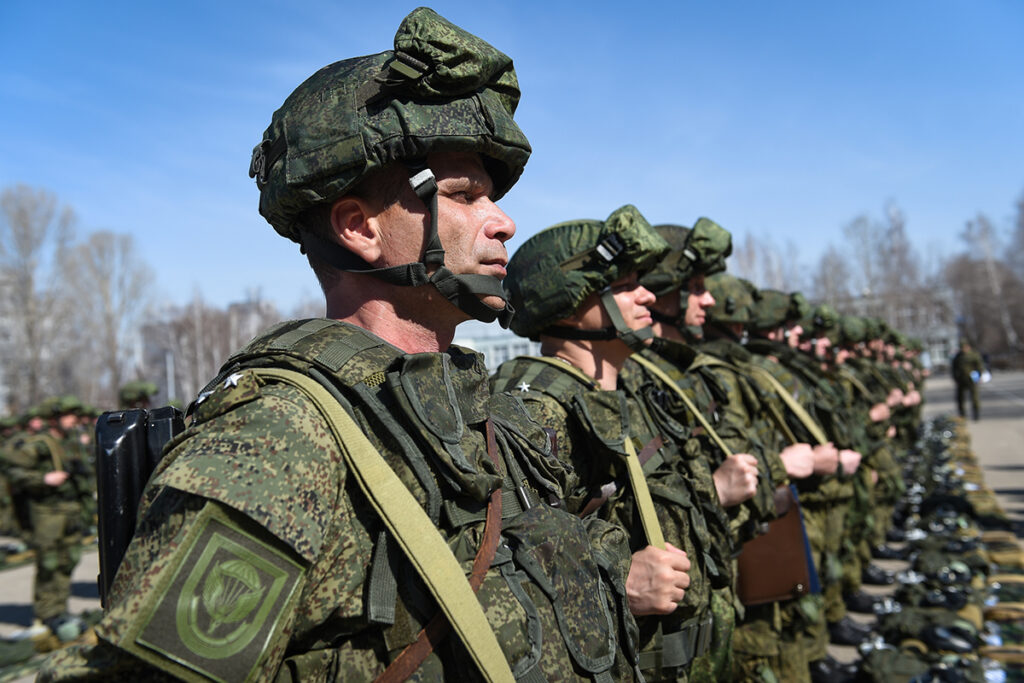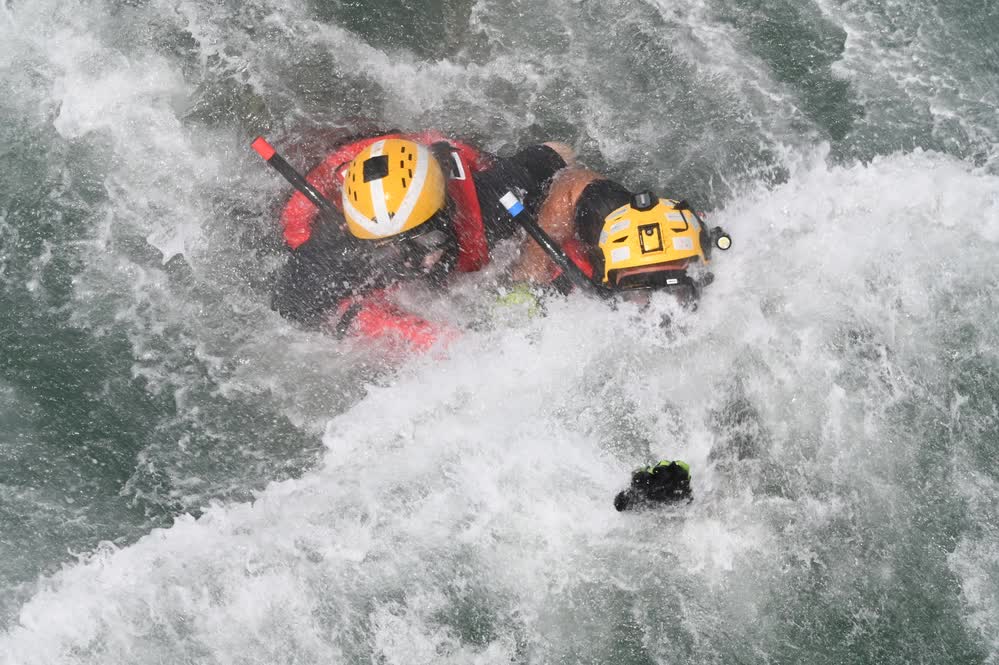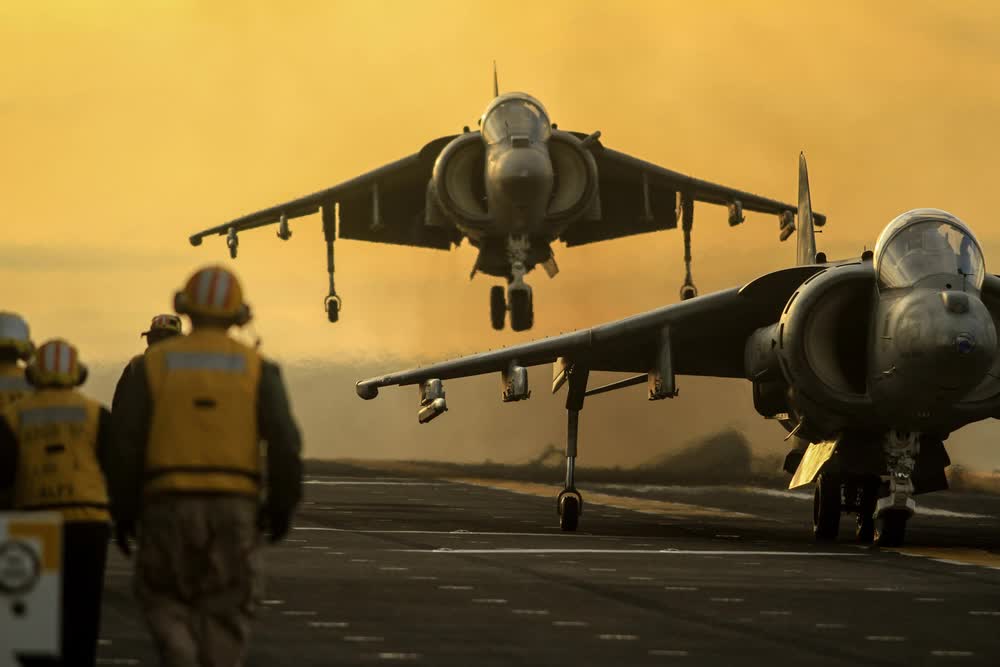The war in Ukraine is going on full till, a matter confirmed by the presence and use of paratroopers in the mix, and usually very early in a conflict. The use of paratroops—or I should say the proper doctrinal use of paratroops—presents a deadly capability.
The presence of paras suddenly on the battlefield is an omen, a forewarning that somebody — hopefully the enemy — is going to get their buttock soundly throttled and battlefield confusion will promptly ensue. A good way to describe the missions of the airborne forces is to compare past successful American airborne operations to what is potentially going on in the Ukraine theater of operations.
Russian Paratroopers in Ukraine
The paratrooper’s missions are primarily disrupting enemy coordination and control, disrupting communications, destroying bridges both rail and auto, and just embedding a general state of mayhem as best as they can behind enemy lines.

Related: When Delta Force goes parachuting
The endgame for airborne troops is very important. Paratroops drop into an objective knowing they must hold out until H-Hour, or when they are planned to be extracted from their area of operations. For troops fighting well behind enemy lines, surrounded and hanging on until H-Hour, the endgame is dear to their hearts. Staying power for a paratroop must be carefully and realistically planned and prepared for during the mission planning phase in order to be effective in operational use.
This speaks directly to recent reports of Russian paratroops looting convenience stores in Ukraine for supplies. If these reports are true, it would mean that these paratroops were left operating behind enemy lines for longer than intended, barring any other potential planning failures.
While seemingly not the issue in Ukraine, if the associated ground extraction forces show up too soon, it could also mean trouble. They can effectively be advancing into a combat zone still hot with the paratroop’s operations, thus risking friendly fire incidents. There again a major emphasis is placed on the reliability of the pre-coordinated battlefield communications.

Reports of the Russian paras operating in Ukraine lead me asking one question:
Did they actually parachute into the Kharkiv, or were they landed by helicopter or even trucked in?
According to some reports, Russian paratroops fighting for the Antonov Airport in the Kyiv suburb of Hostomel arrived via Mil Mi-8 medium-lift helicopters accompanied by Kamov Ka-50 “Black Shark” attack helicopter escorts. Other (potentially bogus) reports claim hundreds of Russian paratroops have been seen parachuting around the country. There have also been multiple reports of Ukraine shooting down II-76 Russian transport planes carrying paratroops onboard.
Though it’s not clear to me, no matter what the means of assault, you still traditionally get an outstanding fighting man in the Russian paras when properly planned for and equipped. Dropping paratroops into a built-up urban environment, however, is a thing that should absolutely be avoided, as it will render many casualties among the force, from sprained ankles to death. Much more than just a couple of accidental para drops in an urban environment and you risk total failure in your operation.
Related: How the largest airborne op in history went wrong
The Advantages of Airborne Troops
Airborne troops bring a great advantage to military operations; namely that they can access areas that ground troops cannot otherwise easily reach. Paratroops, moreover, can bypass heavy fortifications and negate the strategic advantage they provide to a fortified defensive posture.
Germany made very good use of paratroop operations during World War II, although none of the operations were against American forces. America likewise made stellar work of its paratroopers in the same war, namely during the invasion of La Normandie, France on D-Day.

just hours before the drop onto La Normandie (Wikimedia.org).
In all 23,000 paratroops and gliders from the 101st and 82nd airborne divisions landed just behind the main line of German defenses on the landing beaches. They were given the task of taking the town of St. Mère Église and securing key approaches to the Allied beachhead.
“American paratroopers – devils in baggy pants – are less than 100 meters from my outpost line. I can’t sleep at night; they pop up from nowhere and we never know when or how they will strike next. Seems like the blackhearted devils are everywhere,” a German officer said during the war.
U.S. paratroopers still have a mission, though it has dwindled somewhat since the days of World War II. The 101 Airborne Division is—technically speaking—not even airborne anymore these days; rather, it is an Air Assault division specializing in inserting soldiers by means of rotor-winged aircraft (helicopter) instead of the fixed-wing aircraft leveraged to distribute troops across World War II battlefields.
I do believe there will remain a need for much smaller numbers of specialized airborne personnel for a long time to come — maybe not in sizes of division capacity, but certainly within our most elite warfighting units. Airborne will ultimately always be a special skill that our special operations units will carry with them all through their careers.

Paratroop standards vary by nation, but in general, it takes a roughneck troop of considerable brawn and fighting spirit to do the job. Fear of heights will distance many would-be soldiers from the qualifying training. In my case, I had a registered fear of heights and an adverse hatred of the prospect of jumping — especially at night. That unfortunate combination, however, did not keep me from a full Airborne career with some 800 jumps.
By almighty God and with honor,
Geo Sends




